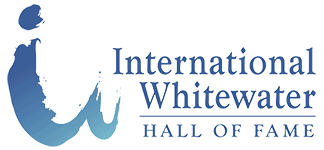Klaus Lettmann (GER)
2008 Class | Advocate
2008 Class | Advocate

Lettmann’s kayak designs and their materials construction set the standard for the early whitewater industry throughout the world and was the basis for what we know today.
Klaus Lettmann began his career in whitewater after completing his studies as an engineer for the steel industry. He completed in the 1963 World Championships in the F1 class, the last year for the folding kayak class. While Klaus continued to compete on the German team through 1967, his racing career was cut short due to an auto accident just prior to the 1967 World Championships, after which he began to concentrate on boat building and design.
Klaus designed his first kayak for wildwater in 1963 using the then new fiberglass materials and in 1964, took courses in hydrodynamics at the Institute for Shipbuilding in Duisburg. He was one of the first designers to place the widest beam of the hull behind the cockpit, a concept which continues in use in most designs today. At the same time, Klaus also began designing slalom kayaks with the same concept with exceptional results. Initially licensing his designs to Toni Prijon, in 1965 he began producing kayaks in his own production facilities. His kayaks were resounding winners at the 1969 World Championships which launched his international business licensing his designs to Gaybo in England and HIPP in the U.S., and later, licenses to manufacturers in France, Spain, Japan, and Scandinavia.
The Lettmann Mark IV slalom kayak, his design for the 1972 Olympics, became the most copied boat in the world. His Mark IV and Mark V designs have been chopped and modified to produce other kayak designs, particularly by the emerging U.S. whitewater industry in the 1970s and 1980s. The Perception Mirage, one of the first successful plastic kayaks, was based on the Lettmann designs.
In addition to kayak and paddle designs (particularly wing paddle design for flatwater), Klaus also was an innovator and one of the earliest to use the newest materials including Kevlar, carbon, and epoxy to produce extremely light weight high-performance racing kayaks and paddles.

 Carl Luther
Carl Luther 